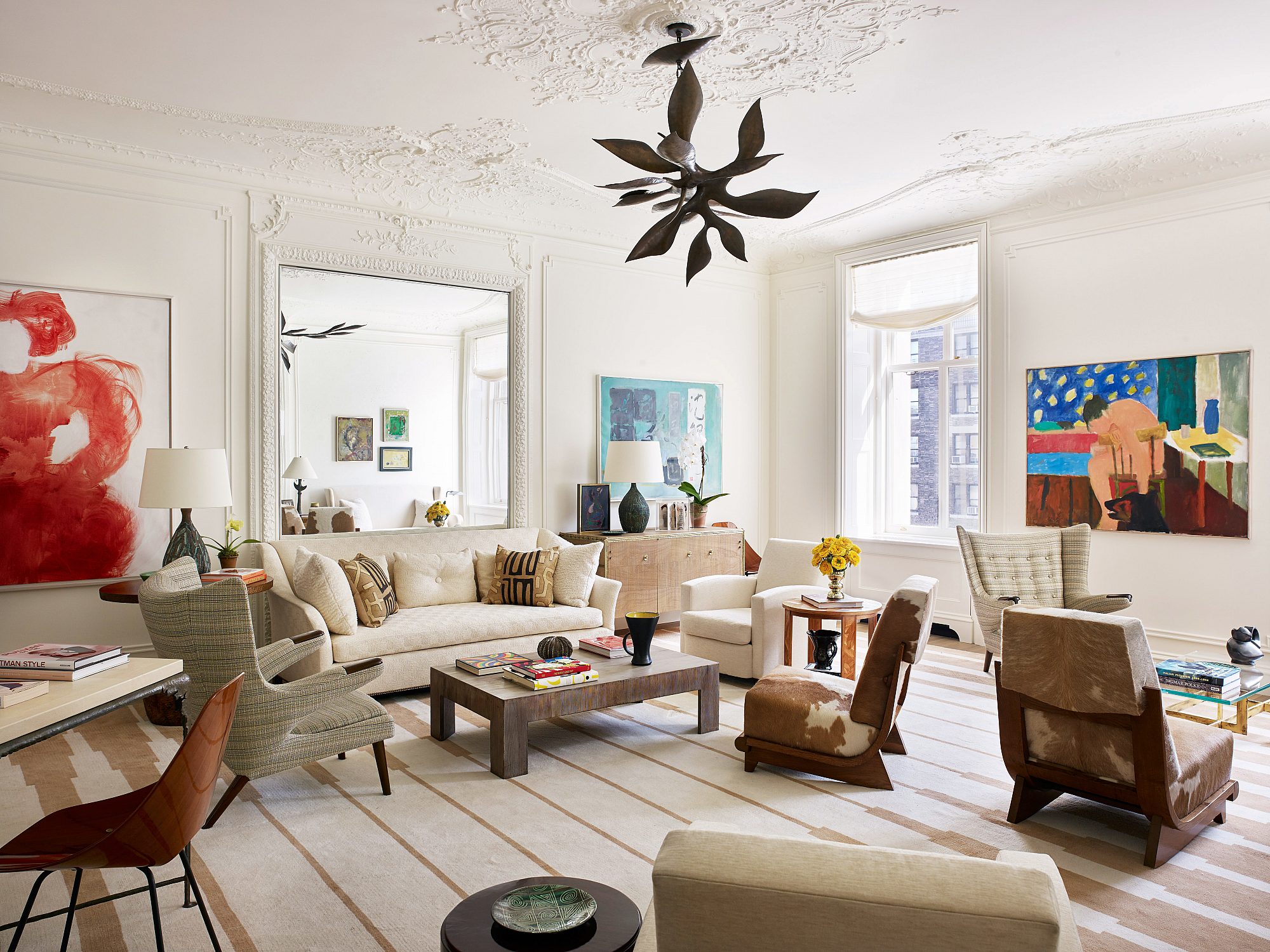
February 21, 2018
Luminosity: An Interview with Designer Brian J. McCarthy
By Ginger Brokaw
I recently had the pleasure of sitting down with Brian McCarthy, the talented, respected and disarmingly charming principal of Brian J. McCarthy Interiors, a leading influencer in the world of interior design. Brian is a former partner of the legendary design firm Parish-Hadley, the author of “Luminous Interiors” and an award-winning designer with a deep understanding of design history that translates into elegant and layered interiors for his clients around the world.
The opportunity to meet with Brian was serendipitous; WM and I had been working throughout the year with brokers who were new to real estate and the topic of mentorship had recently become a point of popular discussion with colleagues, friends, and industry influencers.
So many people, across different industries have their own incredible stories about the person or people of impact in their lives. The ones from whom they learned the valuable lessons. These were ones who led by example, who inspired, taught and challenged them into being the best that they could be. This is the individual who appeared in life by chance or design and made a positive difference.
A gracious invitation to meet at Brian’s home in Manhattan and continue this discussion was the perfect setting for this candid and insightful discussion. The conversation was filled with warm recollections, and paid homage to the people, places and things that were integral in the making of one of the interior design industry’s brightest stars.
GB: Lets start at the beginning. Was interior design something that you knew you wanted to pursue or did it come into your life fortuitously?
BJM: No, not at all, I did not imagine being a decorator when I was young. I loved art and drawing but my true passion was horses and competitive riding. I had dreams of competing on a professional level. Design, decoration and architecture did not cross my mind as a career at that time.
Having said that, there was definitely a strong influence of style in my life. My parents loved to travel and acquired things from around the world that made their way back into our lives. This created a multi-cultural, layered effect in our home.
I also loved to visit my grandparents; they had this amazing 1930’s Georgian house. I loved the scale, the grand staircase, all of the different parts and the history and quality of that lifestyle. It really resonated with me and fueled a curiosity about the way that people live.
I remember in the summer we would go to Hyannis Port and my mother and I would walk around at night, you could see into the homes, the difference in lifestyle and decoration– it was fascinating. I still love to do this when I am in Europe, especially in London, Paris and Amsterdam.
GB: So you were design curious, how did this translate into the next part of the story?
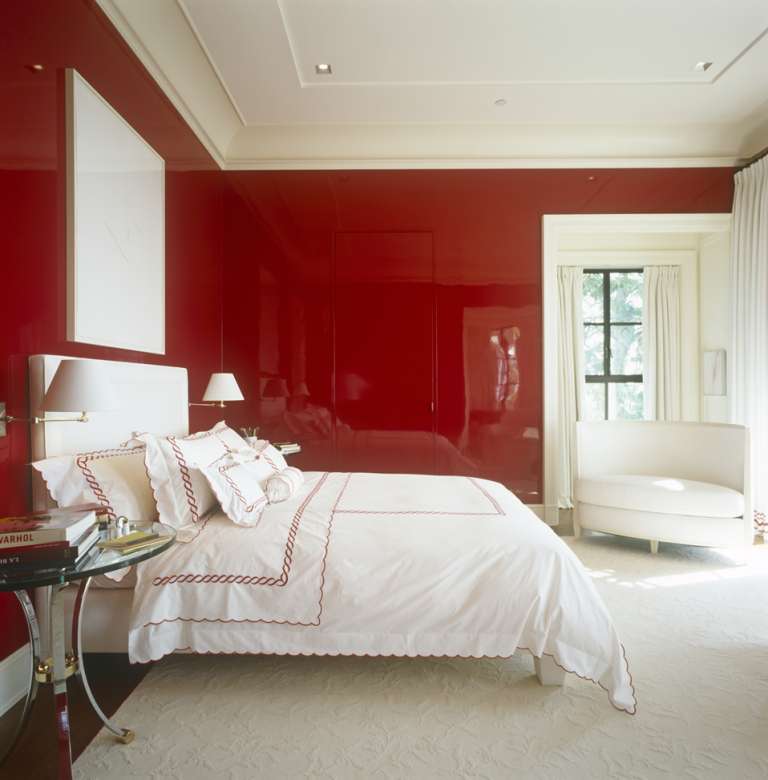
BJM: After college I took a gap year and continued to ride competitively. I think that this is when I had the epiphany that as much as I loved this and had committed myself to it, that my Olympic dreams were probably not a reality and I did not want my entire existence to revolve around horse shows. This wasn’t going to be my destiny. I knew that there needed to be more.
GB: And the next chapter began?
BJM: Yes, and by coincidence. My next-door neighbor was an architect. She knew that I was interested in art and drawing and she helped me map out a plan to attend art school. I considered a number of programs, but when I visited Pratt something resonated with me. The day that I received my letter of acceptance was the beginning of the best years of my life. I loved the classes and my teachers. I felt like I was home in NYC and that I would never leave.
In my last semester, I started applying for jobs and landed one that I excited to begin. I was ready to start my new career and the next chapter of my life in the city. Shortly after learning that I had gotten a job at a design firm, I was informed that the company decided that they needed to fill the position immediately and could not wait for me to graduate. I was now working on my thesis paper and back to looking for a job.
During my years at Pratt I spent a great deal of time at the D&D Building, design students would go there to get materials for their projects and I became friendly with the people in the show rooms. One day someone told me that Albert Hadley was looking for an assistant.
Parrish – Hadley was already a force majeure in the field of design for decades before I arrived. Sister Parish and Albert Hadley were more of my parent’s generation, and there were other design geniuses on the scene at that time, like John Saladino and Michael Graves to name a few, but Parrish- Hadley were masters, the firm had gravitas. I knew that this was an incredible opportunity.
GB: In retrospect, it’s clear that losing the first job may have been what we call a “Happy Accident” or kismet. What was meeting with Albert Hadley and the interview like? He had earned the moniker “The Dean of Interior Design” it had to be a little awe-inspiring?
BJM: Oh it definitely was kismet. He was a legend. I knew what he had accomplished. The firm was known for decorating the Kennedy White House and having a client list of prominent families whose names populated the New York Social Register for decades, but that’s not what impressed me.
Albert and I got along very well during the process; he was incredibly interesting and very easy to talk with. He had an ego, and it’s an industry of egos but the remarkable thing about Albert was that he did not display it. He was incredibly humble, a gentle man and a gentleman. You could not find a better mentor or role model in the world. Getting the phone call and learning that I had gotten the job was life changing.
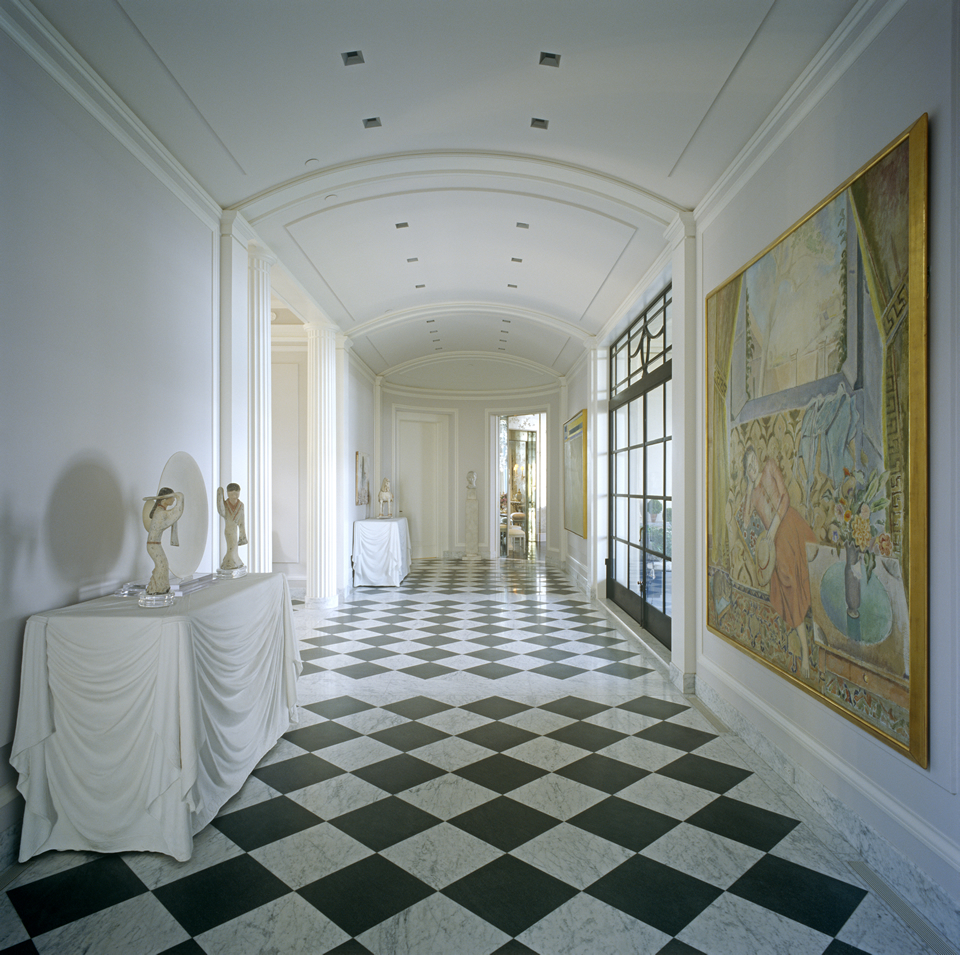
GB: Wow, what an incredible way to be remembered. When words like interesting and humble are paired with gentleman and role model to describe someone, they have had the ultimate success in my opinion. What were your early days at Parrish-Hadley like?
BJM: Eye-opening, when I first arrived in that office Albert immediately took me under his wing. When you were working there you were part of everything. On the first day with him I was taken on a client meeting with Enid Haupt. Her social standing, talent and philanthropy in support of horticulture, the arts, architectural and historic preservation was legendary. She was simply amazing. To this day, she was one of my all time favorites.
The funny thing is that this was a normal day for me then. Now 35 years later and looking back I realize that what was normal to me was not the same for everyone in my profession. It was an extraordinary education.
GB: To have the opportunity to be raised in an industry by someone of true intelligence, talent and specifically character had to have a profound impact both professionally and personally?
BJM: Yes, absolutely, and without question it does carry over into the next stage of your life. This was the only way that I knew how to treat people, because that was how Albert did it and it’s really the best way to get the best out of people. Today I have these amazing relationships with all of these artists, craftsman and ateliers that we work with; this was the gift of Albert. People adored working with him and it was that way with everyone. It was his natural instinct. .
GB: It’s remarkable to speak of someone’s character before you even go into his or her talent. You were learning your craft from a celebrated designer. What was the education like?
BJM: The first thing that I remember doing with him was going to Arthur Schneller & Sons, a legendary upholstery workshop. Arthur had a lifeline between his finger and fabric; he was like a great couturier, his work was impeccable. This is where I was first introduced to shape, proportion and draping, this was not about fabric, it was about construction and architecture. The workshop was filled with all of these perfectly executed pieces of furniture and drapery, all in white muslin – it was pure art. I thought about my experience at Schneller & Sons last year when I visited the Dior exhibit at the Musée des Art Décoratifs, it had a similar sensibility, it was about the craftsmanship.
GB: Yes, that was such a great retrospective, and I know the exhibit you are referring to, the comparison is completely on point. That’s a master class in design. Tell me, is there one thing that you learned in the early days that is a cornerstone of your career today?
BJM: I had to choose one important lesson; it was not branding myself to one thing, one style. Albert was not interested in one idea, he was interested in everything. My work is about the client and the individual; each project has its own unique narrative.
GB: Can you talk to me about your relationship with clients, how it begins and takes shape?
BJM: I refer to my first meeting with clients as a blind date; it’s about listening and answering questions. When we leave that meeting, the question is, do you want a second date?
My relationship with clients is not unlike a marriage, its incredibly intimate, it has to be a good fit and a mutual attraction. I need to see into their world, understand their needs and expand on it. On this point I owe everything to my foundation at Parrish-Hadley. Relationships were paramount to Mrs. Parrish and Albert Hadley. They had a deep understanding of their clients and their needs.
The relationship between the designer and a client is very personal. In order for me to create these homes where they will live their lives, places that will become a part of their family history, there has to be a real connection.
GB: I can’t help but think that this might get complicated at times, I’ve always wondered how interior designers and architects deal with a client’s vision that they can’t really wrap their heads around or agree with?
BJM: I wouldn’t say that that I can’t wrap my head around something, rather that I can see beyond it. In thinking like that, you can give someone what they want but, but also introduce concepts that inspire different ways of looking at the same thing. It’s getting hold of an idea and then expanding on it. I love to introduce my clients to the thought process, an artist, a new idea that is beyond what they may have thought about on their own. I like to expand horizons and it’s the same for me with the people in my office and the different artisans that I work with, I want to hear their ideas, I want to learn, to be introduced to new concepts and to see things that I have not seen before. I want to be dazzled.
Great results come from collaboration, working with a group of people who come together to create a vision. The final product is an ensemble piece.
GB: We have discussed the how important Albert Hadley was to you as a mentor. He saw something in you and took you under his wing. You are now the mentor to a new generation of designers. How do you spot talent? What do you look for in the people who come to work with you and what makes someone exceptional?
BJM: It goes back to the first date analogy. You just know when someone is exceptional. It’s important for a person to be interesting and interested. I love curious people, someone who turns things inside out to learn everything that they can about it.
GB: And as a mentor, what is the message that you would hope for someone to take away from the experience?
BJM: The hours that we work are our most vital, and no one day is ever the same. There is always something new and something to learn. As a design studio and as a designer you need to work cohesively and collaboratively across many platforms and understand that inspiration comes from all around. Each project has its own challenges and levels of excitement; our job is to see the vision through to the end – we turn moths into butterflies. We are here to transform.
GB: In ending, what is the most rewarding thing to you when working with your team?
BJM: When there is laughter, when the room is alive and inspired.
GB: What is the most rewarding thing to you when working with clients?
BJM: When you see tears in their eyes, because you have exceeded the expectations.
Thank you Brian. It has been an absolute pleasure to meet you. GB
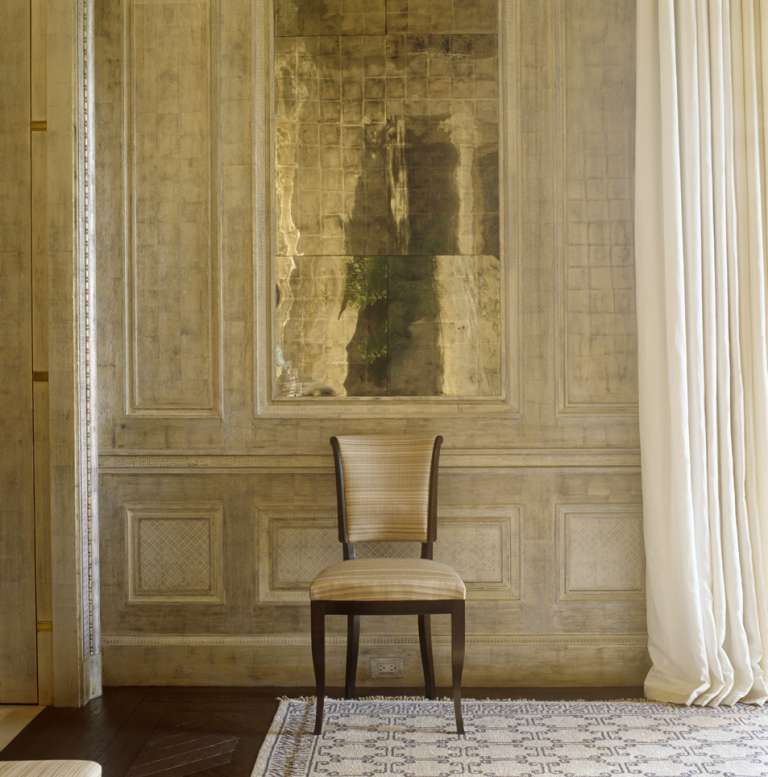

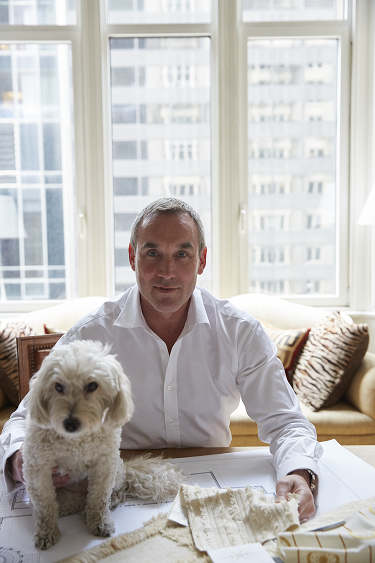
Brian J. McCarthy is founder of Brian J. McCarthy Interiors, New York & Paris, and a former partner of the legendary design firm Parish-Hadley. He is the author of “Luminous Interiors” a collection of his select design projects from around the world and co-author of “The Parish-Hadley Tree of Life: An Intimate History of the Legendary Design Firm”, with close friend and Parish-Hadley alum Bunny Williams. Brian is an award winning designer, and a distinguished member of Architectural Digest’s “AD100” . He lives in Manhattan with his partner Daniel Sager and their muse, a poodle mix named “Daisy”
Photo 1: Credit info: Photo by Francesco Lagnese
Photo 2: Credit info: © Luminous Interiors by Brian J. McCarthy; Stewart, Tabori & Chang, 2013. Photo by Fritz von der Schulenburg
Photo 3: Credit info: Photo by Fritz von der Schulenburg
Photo 4: Credit info: “Christian Dior: Couturier du Rêve. Musée des Art Décoratifs, Paris 2017
Photo 5: Credit info: © Luminous Interiors by Brian J. McCarthy; Stewart, Tabori & Chang, 2013. Photo by Fritz von der Schulenburg
Photo 6: Credit info: © Luminous Interiors by Brian J. McCarthy; Stewart, Tabori & Chang, 2013. Photo by Francesco Lagnese
Follow Brian on Instagram or Facebook and be sure to check out his website!
Next Journal
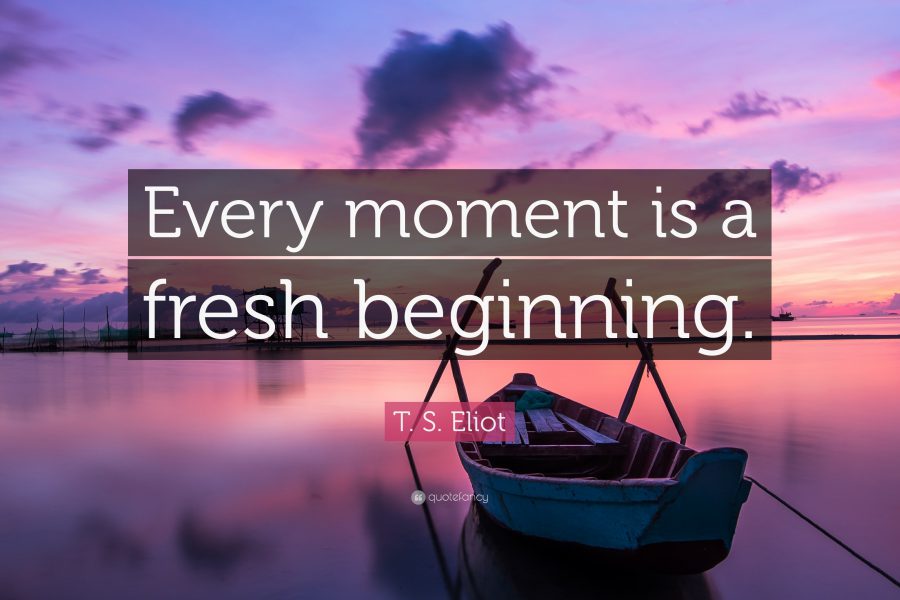
December 18, 2017
A Note on Endings & New Beginnings
Wendy Maitland shares her feelings on the conclusion of 2017 & new beginnings and opportunities to come in the future.
Read MoreWant to learn more?
Sign up for our mailing list for exclusive insights into property listings and all things New York real estate